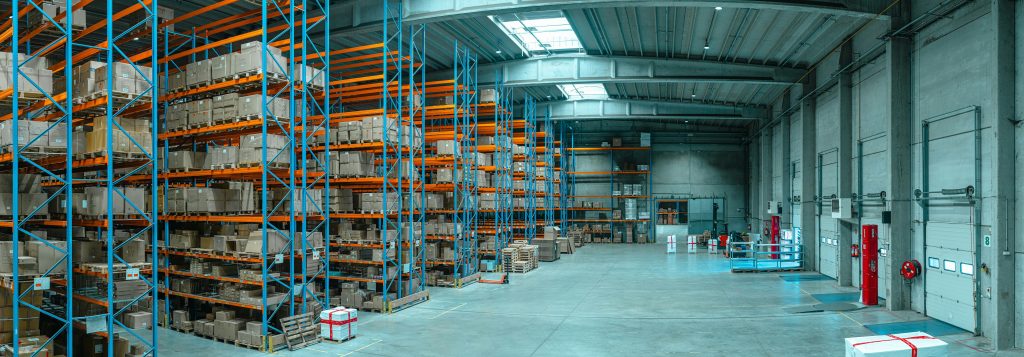- Streamline operations through process optimization to reduce delays and costs.
- Enhance relationships with suppliers and customers for better inventory management.
- Invest in technology and automation to boost productivity and reduce errors.
- Focus on employee training and engagement to improve morale and efficiency.
- Embrace continuous improvement and adaptation to stay competitive in the market.
In the fast-paced logistics and supply chain management world, warehouse businesses play a crucial role in ensuring products reach consumers efficiently in modern societies like Singapore, China, and Japan. However, like any other enterprise, warehouses can encounter challenges that jeopardize their functionality and profitability. From inefficient processes to outdated technology, there are various reasons why a warehouse business might start faltering. But fear not, for there are strategies to rejuvenate and revitalize a failing warehouse operation. This article will explore five effective ways to restore functionality to a struggling warehouse business.
1. Streamline Operations with Process Optimization:
When a warehouse business begins to falter, one of the first areas to scrutinize is its operational processes. Inefficiencies in workflows can lead to delays, errors, and increased costs. To address this issue, it’s crucial to conduct a comprehensive review of existing processes and identify areas for improvement.
Inventory Management:

Implementing robust inventory management systems can help streamline the storage, tracking, and replenishment of goods. Utilize technologies such as barcode scanners and RFID tags to enhance accuracy and efficiency.
Order Fulfillment:
Streamline the order fulfillment process by reorganizing picking routes, optimizing packing stations, and leveraging automation where possible. This can reduce order processing times and improve customer satisfaction.
Warehouse Layout:
Evaluate the layout of the warehouse to ensure optimal use of space and minimize unnecessary movement. Try to group frequently picked items closer to packing areas and consider implementing zone-picking strategies to improve efficiency.
2. Enhance Supplier and Customer Relationships:
Effective communication and collaboration with suppliers and customers are essential for the smooth functioning of a warehouse business. Strengthening these relationships can lead to improved inventory management, faster order processing, and increased customer satisfaction.
Supplier Collaboration:
Work closely with suppliers to optimize inventory levels, reduce lead times, and negotiate favorable terms. Implement vendor-managed inventory (VMI) programs to allow suppliers to manage stock levels directly, reducing the burden on warehouse operations.
Customer Engagement:
Foster strong relationships with customers by providing excellent service, offering flexible delivery options, and proactively addressing their needs. Utilize customer feedback to identify areas for improvement and enhance the overall shopping experience.
Equipment Rental:
Consider partnering with reputable rental companies to ensure you have access to reliable equipment when needed. Forklift rental services can be a cost-effective solution for handling seasonal fluctuations in demand or unexpected spikes in workload.
3. Invest in Technology and Automation:
In today’s digital age, technology is pivotal in optimizing warehouse operations. Investing in advanced technologies and automation solutions can significantly enhance productivity and reduce errors.
Warehouse Management Systems (WMS):
Implementing a robust WMS can provide real-time visibility into inventory levels, order statuses, and warehouse performance metrics. This enables better decision-making and improved resource allocation.
Automation Equipment:
Explore using automated material handling equipment such as conveyor systems, automated guided vehicles (AGVs), and robotic picking systems. These technologies can streamline repetitive tasks, increase throughput, and reduce labor costs.
Data Analytics:
Leverage data analytics tools to gain insights into warehouse performance, identify bottlenecks, and forecast demand more accurately. This data-driven approach enables proactive decision-making and continuous improvement.
4. Focus on Employee Training and Engagement:

A warehouse is only as efficient as its workforce. Investing in employee training and fostering a culture of engagement can significantly impact productivity and morale.
Training Programs:
Provide comprehensive training programs for warehouse staff to ensure they are proficient in operating equipment, following procedures, and adhering to safety protocols. Continuous training keeps employees updated on the latest best practices and technologies.
Employee Empowerment:
Empower employees by involving them in decision-making processes and recognizing their contributions. Encourage feedback and suggestions for process improvements, as frontline workers often have valuable insights into operational challenges.
Safety Initiatives:
Prioritize employee safety through regular safety training, ergonomic assessments, and the implementation of safety protocols. A safe working environment not only protects employees from harm but also boosts morale and productivity.
5. Continuous Improvement and Adaptation:
The business landscape is constantly evolving, and warehouse operations must adapt to stay competitive. Embrace a culture of continuous improvement and innovation to remain agile and responsive to changing market dynamics.
Kaizen Philosophy:
Adopt the principles of Kaizen, which emphasize continuous incremental improvements in processes and operations. Encourage employees at all levels to identify areas for improvement and implement small changes to drive efficiency.
Agile Supply Chain Practices:
Implement agile supply chain practices to respond quickly to changes in demand, supply disruptions, and market trends. Foster collaboration across departments and with external partners to enable rapid decision-making and problem-solving.
Technology Adoption:
Stay abreast of emerging technologies and trends in warehouse management, such as Internet of Things (IoT) sensors, machine learning, and predictive analytics. Evaluate how these technologies can be leveraged to improve operational efficiency and stay ahead of the competition.
Restoring functionality to a failing warehouse business requires a multi-faceted approach that addresses operational inefficiencies, leverages technology and automation, empowers employees, strengthens relationships with suppliers and customers, and embraces a culture of continuous improvement. By implementing the strategies outlined in this article, warehouse operators can overcome challenges, enhance productivity, and position their businesses for long-term success in a competitive marketplace. Remember, the key to success lies in adaptability, innovation, and a relentless pursuit of excellence.





